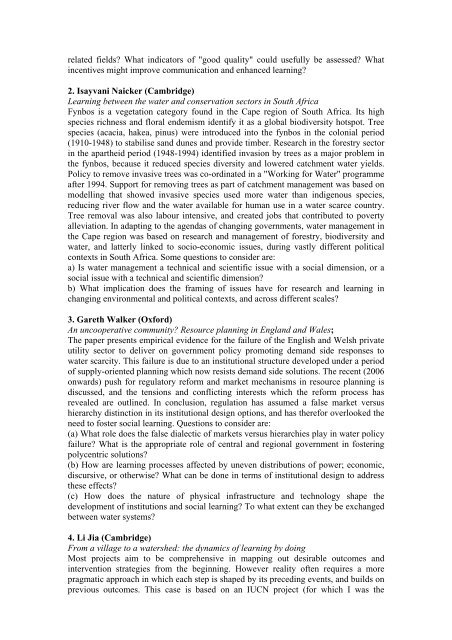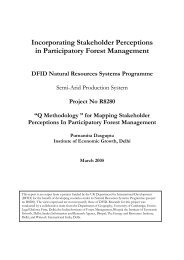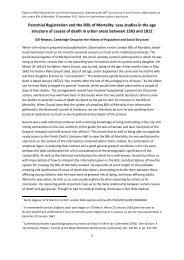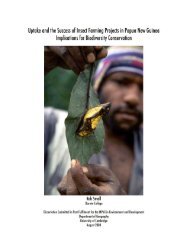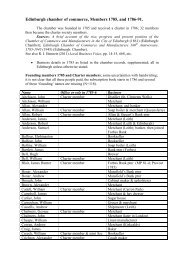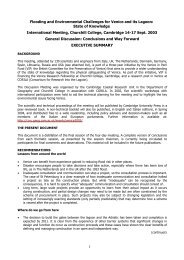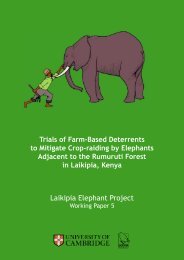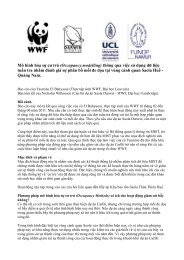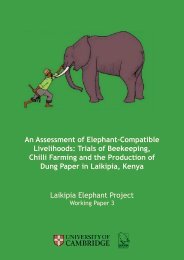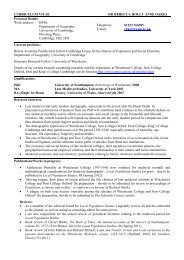Workshop booklet including programme and participant list
Workshop booklet including programme and participant list
Workshop booklet including programme and participant list
You also want an ePaper? Increase the reach of your titles
YUMPU automatically turns print PDFs into web optimized ePapers that Google loves.
elated fields? What indicators of "good quality" could usefully be assessed? What<br />
incentives might improve communication <strong>and</strong> enhanced learning?<br />
2. Isayvani Naicker (Cambridge)<br />
Learning between the water <strong>and</strong> conservation sectors in South Africa<br />
Fynbos is a vegetation category found in the Cape region of South Africa. Its high<br />
species richness <strong>and</strong> floral endemism identify it as a global biodiversity hotspot. Tree<br />
species (acacia, hakea, pinus) were introduced into the fynbos in the colonial period<br />
(1910-1948) to stabilise s<strong>and</strong> dunes <strong>and</strong> provide timber. Research in the forestry sector<br />
in the apartheid period (1948-1994) identified invasion by trees as a major problem in<br />
the fynbos, because it reduced species diversity <strong>and</strong> lowered catchment water yields.<br />
Policy to remove invasive trees was co-ordinated in a "Working for Water" <strong>programme</strong><br />
after 1994. Support for removing trees as part of catchment management was based on<br />
modelling that showed invasive species used more water than indigenous species,<br />
reducing river flow <strong>and</strong> the water available for human use in a water scarce country.<br />
Tree removal was also labour intensive, <strong>and</strong> created jobs that contributed to poverty<br />
alleviation. In adapting to the agendas of changing governments, water management in<br />
the Cape region was based on research <strong>and</strong> management of forestry, biodiversity <strong>and</strong><br />
water, <strong>and</strong> latterly linked to socio-economic issues, during vastly different political<br />
contexts in South Africa. Some questions to consider are:<br />
a) Is water management a technical <strong>and</strong> scientific issue with a social dimension, or a<br />
social issue with a technical <strong>and</strong> scientific dimension?<br />
b) What implication does the framing of issues have for research <strong>and</strong> learning in<br />
changing environmental <strong>and</strong> political contexts, <strong>and</strong> across different scales?<br />
3. Gareth Walker (Oxford)<br />
An uncooperative community? Resource planning in Engl<strong>and</strong> <strong>and</strong> Wales;<br />
The paper presents empirical evidence for the failure of the English <strong>and</strong> Welsh private<br />
utility sector to deliver on government policy promoting dem<strong>and</strong> side responses to<br />
water scarcity. This failure is due to an institutional structure developed under a period<br />
of supply-oriented planning which now resists dem<strong>and</strong> side solutions. The recent (2006<br />
onwards) push for regulatory reform <strong>and</strong> market mechanisms in resource planning is<br />
discussed, <strong>and</strong> the tensions <strong>and</strong> conflicting interests which the reform process has<br />
revealed are outlined. In conclusion, regulation has assumed a false market versus<br />
hierarchy distinction in its institutional design options, <strong>and</strong> has therefor overlooked the<br />
need to foster social learning. Questions to consider are:<br />
(a) What role does the false dialectic of markets versus hierarchies play in water policy<br />
failure? What is the appropriate role of central <strong>and</strong> regional government in fostering<br />
polycentric solutions?<br />
(b) How are learning processes affected by uneven distributions of power; economic,<br />
discursive, or otherwise? What can be done in terms of institutional design to address<br />
these effects?<br />
(c) How does the nature of physical infrastructure <strong>and</strong> technology shape the<br />
development of institutions <strong>and</strong> social learning? To what extent can they be exchanged<br />
between water systems?<br />
4. Li Jia (Cambridge)<br />
From a village to a watershed: the dynamics of learning by doing<br />
Most projects aim to be comprehensive in mapping out desirable outcomes <strong>and</strong><br />
intervention strategies from the beginning. However reality often requires a more<br />
pragmatic approach in which each step is shaped by its preceding events, <strong>and</strong> builds on<br />
previous outcomes. This case is based on an IUCN project (for which I was the


